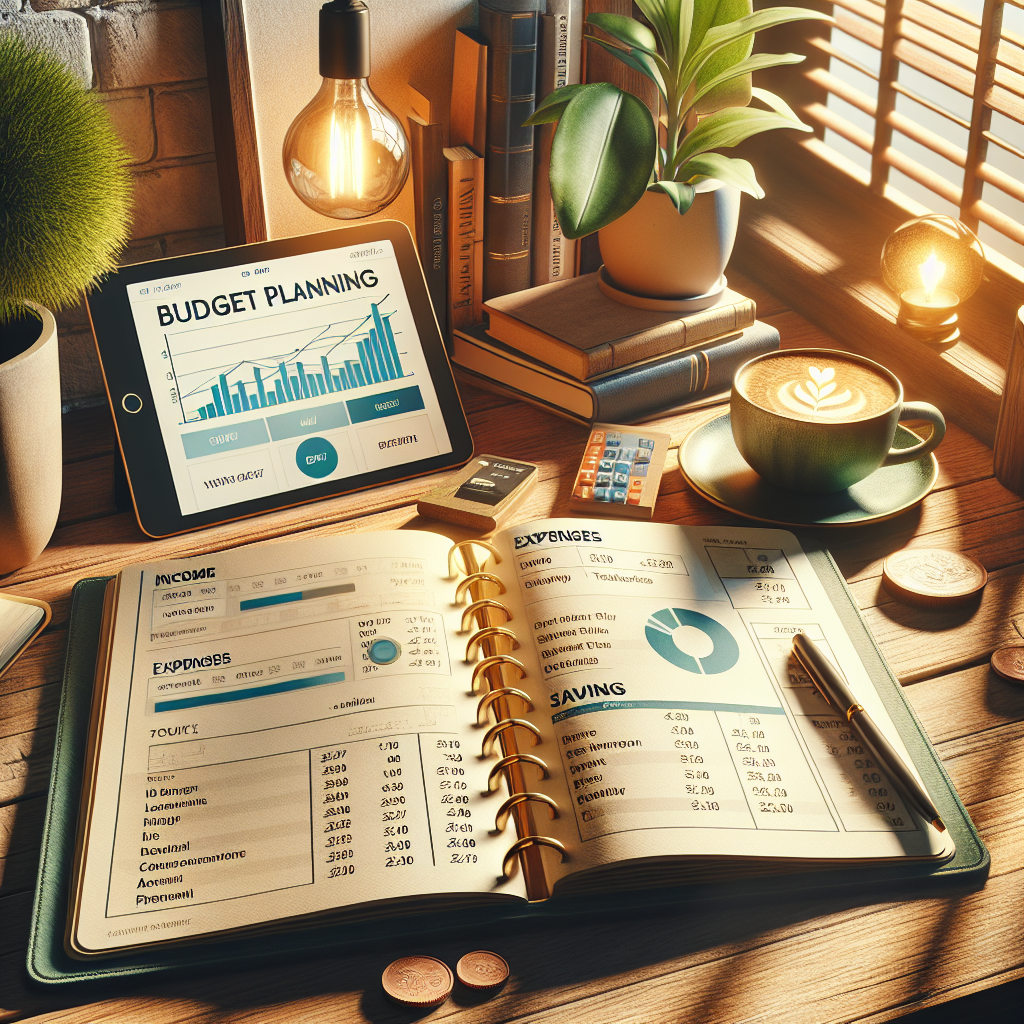In today’s fast-paced world, managing finances can be a daunting task. This is where budget planners come into play. A budget planner is a tool designed to help individuals and small businesses keep track of their income, expenses, and savings. By providing a structured approach to managing money, budget planners aim to make financial management more transparent and straightforward.
Budget planners come in various forms, including traditional pen-and-paper planners, digital spreadsheets, and advanced mobile apps. Each type offers its unique features and benefits, catering to different preferences and needs. For instance, digital budget planners often include features like automated expense tracking, customizable budgeting categories, and real-time financial insights, making them highly efficient and user-friendly.
One of the primary advantages of using a budget planner is that it fosters a sense of accountability and discipline. By regularly recording and reviewing financial activities, users can identify patterns in their spending habits and make informed decisions to improve their financial health. Moreover, budget planners can help users set realistic financial goals and track their progress over time, ultimately leading to better money management and increased savings.
Ready to take control of your finances and experience effortless savings? Download Vala today and start managing your budget with ease!
How Budget Planners Work
Budget planners operate by offering a systematic method for recording and monitoring financial transactions. The primary function of a budget planner is to help users allocate their income towards various expenses, savings, and investments, ensuring that every dollar is accounted for. This process typically involves several key steps:
- Income Tracking: Users start by noting all sources of income, including salaries, freelance earnings, rental income, and any other financial inflows. This provides a clear picture of the total money available for budgeting.
- Expense Categorization: Next, users categorize their expenses into different groups such as housing, utilities, groceries, entertainment, and transportation. This helps in identifying where the money is going and which areas may require adjustments.
- Budget Allocation: Based on the categorized expenses, users then allocate a specific amount of money to each category. This step is crucial for setting spending limits and ensuring that essential expenses are prioritized.
- Expense Tracking: As money is spent, users record each transaction in their budget planner. This real-time tracking helps in maintaining financial discipline and avoiding overspending.
- Review and Adjustments: Periodically, users review their budget to assess whether they are staying within their allocated limits. If necessary, adjustments are made to better align spending with financial goals.
By following these steps, budget planners provide a comprehensive overview of one’s financial situation, making it easier to manage money effectively and achieve long-term financial stability. The key to success with budget planners lies in consistency and regular monitoring, which ensures that users remain on track with their financial objectives.
Benefits Of Using Budget Planners

Using budget planners can offer a multitude of benefits, transforming the way individuals and small businesses manage their finances. Here are some of the key advantages:
- Financial Clarity: One of the most significant benefits is gaining a clear understanding of your financial situation. By tracking income and expenses, users can identify spending patterns and make informed decisions about their money.
- Expense Control: Budget planners help in setting spending limits for various expense categories, preventing overspending and promoting disciplined financial habits. This control is essential for avoiding debt and ensuring that essential needs are met.
- Goal Setting and Achievement: With a budget planner, users can set specific financial goals, such as saving for a vacation, building an emergency fund, or paying off debt. The planner provides a roadmap to achieve these goals by allocating funds appropriately and tracking progress.
- Stress Reduction: Financial uncertainty can be a major source of stress. Budget planners reduce this anxiety by offering a structured approach to money management, ensuring that users are prepared for both expected and unexpected expenses.
- Improved Savings: By highlighting unnecessary expenditures, budget planners help users identify areas where they can cut back and save more. This increased awareness fosters better saving habits and contributes to long-term financial security.
- Enhanced Financial Literacy: Regular use of a budget planner improves financial literacy by educating users about their spending habits, financial priorities, and the importance of budgeting. This knowledge is invaluable for making smarter financial decisions.
Incorporating a budget planner into your financial routine can lead to substantial improvements in how you manage your money, ultimately paving the way for a more secure and prosperous future. The benefits extend beyond mere numbers, offering peace of mind and a greater sense of control over your financial destiny.
Different Types Of Budget Planners

Budget planners come in various forms, each designed to cater to different needs and preferences. Understanding the different types can help you choose the one that best fits your lifestyle and financial goals. Here are some of the most popular types of budget planners:
- Traditional Pen and Paper Planners: These are manual budget planners where users record their income, expenses, and savings goals in a physical notebook or planner. They offer a tactile experience and are ideal for those who prefer writing things down.
- Spreadsheet-Based Planners: Utilizing software like Microsoft Excel or Google Sheets, these planners allow for more complex calculations and customizations. They are great for users who are comfortable with spreadsheets and want a detailed, flexible budgeting tool.
- Mobile Apps: Budgeting apps such as Mint, YNAB (You Need A Budget), and Vala provide a digital and often automated way to manage finances. These apps offer features like transaction tracking, goal setting, and personalized financial insights, making them convenient and user-friendly.
- Envelope System: Based on the cash envelope method, this planner involves allocating cash into different envelopes for various spending categories. It’s a practical way to limit spending and ensure that you don’t exceed your budget in any category.
- Online Budgeting Tools: Websites and online platforms offer comprehensive budgeting services with features like syncing bank accounts, generating financial reports, and providing real-time financial updates. They are ideal for those who want an all-in-one financial management solution.
- Printable Budget Sheets: These are downloadable and printable sheets that users can fill out manually. They combine the flexibility of digital tools with the simplicity of pen and paper, making them versatile for various users.
Choosing the right type of budget planner depends on your individual needs, financial goals, and personal preferences. Whether you prefer the simplicity of a traditional planner or the advanced features of a digital app, there is a budget planner out there to help you take control of your finances effectively.
Common Challenges And Solutions

While budget planners can be highly effective tools for managing finances, users often encounter some common challenges. Here are a few of those challenges along with practical solutions:
- Inconsistent Tracking: One of the main hurdles is maintaining consistency in tracking expenses. Many users start with enthusiasm but gradually fall off the wagon. To overcome this, set a specific time each week to update your budget and use reminders or alerts to keep you on track.
- Unexpected Expenses: Unplanned expenses can throw off even the best-laid budgets. To mitigate this, create an emergency fund specifically for unexpected costs. Allocating a small percentage of your income to this fund can provide a safety net.
- Overcomplicated Systems: Some budget planners can be overly complicated, making them difficult to stick with. Simplify your budgeting process by focusing on key categories like necessities, savings, and discretionary spending. Choose a planner that matches your comfort level and gradually add complexity as you become more adept.
- Lack of Motivation: Staying motivated can be tough, especially if your financial goals seem distant. Break down larger goals into smaller, manageable milestones. Celebrate these small wins to keep your motivation high and track your progress visually using charts or graphs.
- Income Variability: For those with irregular income, budgeting can be particularly challenging. In such cases, base your budget on your lowest expected income and categorize any additional earnings as bonus income, to be allocated toward savings or debt repayment.
- Family and Partner Differences: Budgeting as a family or couple can lead to disagreements. Open communication is key. Hold regular financial meetings to discuss and align on budget goals and ensure everyone is on the same page.
By understanding these common challenges and implementing the suggested solutions, you can make the most out of your budget planner and stay on track to achieve your financial goals. Remember, the key to successful budgeting is consistency and adaptability.
Tips For Choosing The Best Budget Planner

Choosing the right budget planner can make a significant difference in achieving your financial goals. Here are some tips to help you select the best budget planner for your needs:
- Identify Your Financial Goals: Start by clearly defining what you want to achieve with your budget planner. Are you looking to save for a specific goal, pay off debt, or simply track your spending? Knowing your objectives will guide you in choosing a planner that fits your needs.
- User-Friendly Interface: A budget planner should be easy to use and navigate. Look for planners with an intuitive interface that simplifies data entry and allows you to quickly access important information.
- Customization Options: Every individual’s financial situation is unique. Select a budget planner that offers customization options so you can tailor it to your specific needs. This might include adjustable categories, personalized spending limits, and the ability to add notes or memos.
- Integration with Financial Accounts: The best budget planners can connect directly to your bank accounts, credit cards, and other financial institutions. This feature can save you time and reduce manual entry errors by automatically importing transactions.
- Reporting and Analytics: Detailed reports and analytics can provide valuable insights into your spending habits. Choose a planner that offers comprehensive reporting features, including charts, graphs, and spending summaries.
- Security Features: Given the sensitive nature of financial information, ensure that the budget planner you choose has robust security measures in place. Look for planners that use encryption and other security protocols to protect your data.
- Mobile Accessibility: In today’s fast-paced world, having access to your budget planner on the go is crucial. Opt for a planner that offers a mobile app or a responsive web interface, so you can manage your finances anytime, anywhere.
- Customer Support: Reliable customer support can be a lifesaver when you encounter issues or have questions. Check if the planner offers various support channels, such as live chat, email, or phone support.
By considering these factors, you can choose a budget planner that not only meets your immediate needs but also supports your long-term financial goals. Ready to take control of your finances and experience effortless savings? Download Vala today and start managing your budget with ease!







